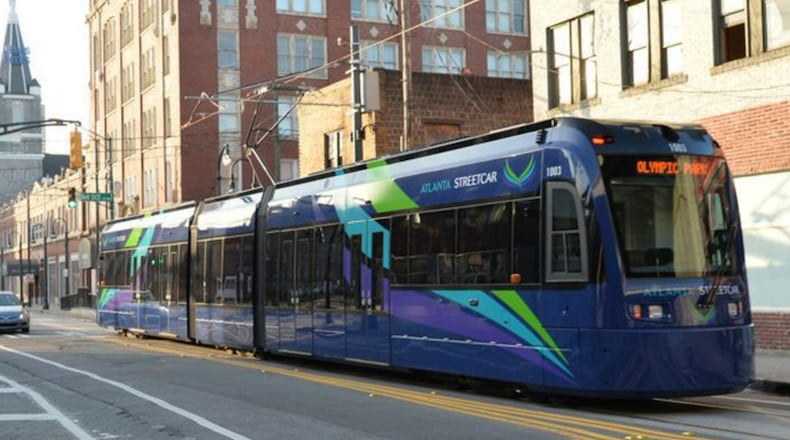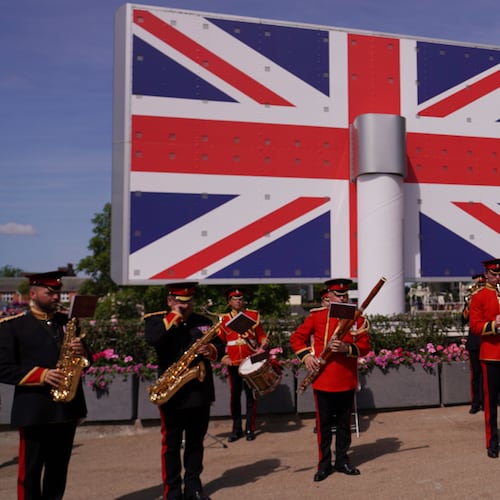Atlanta stands at a pivotal moment in its urban development.
Over 50 years ago the region voted to build an extensive rail system supported by a bus system. Thus, the creation of MARTA — although as of today we have not actually completed that original commitment.
The Atlanta Streetcar and the East Side Beltline give us the opportunity to revive and expand that original vision.
Specifically, the extension of the Atlanta Streetcar to the Beltline and on the East Side Trail are not merely transportation projects; they are foundational elements for a more vibrant, accessible and economically robust future.
They, indeed, are the beginning of the 22-mile vision of Beltline transit.
Pedestrian and bike trains are invaluable, but not enough
Credit: hand
Credit: hand
Critics of the existing Streetcar have raised legitimate issues, and it certainly has its challenges.
But it still offers huge promise — already connecting some of the largest tourist destinations in the downtown like the MLK, Jr. National Historic Park and the National Center for Civil and Human Rights, a link to the MARTA system and educational and residential developments along its path.
It is crucial to acknowledge that legitimate changes and improvements can and should be made to enhance the Streetcar’s functioning. We can learn from past operational experiences to ensure optimal performance as it expands - and in the process re-envisioning all our city streets to eliminate conflicts and improve pedestrian, bike and traffic flow.
The construction of dedicated light rail on the East Side Trail is a logical and necessary next step. While the pedestrian and bike trails are invaluable, the sheer volume of users, coupled with the dense development along this segment, necessitates a higher-capacity transit solution.
Early transportation modeling of the East Side Beltline Transit was remarkably prescient, showing it would be the single most productive new transit line in the region. Crucially, this modeling was conducted before the massive new housing, office, and retail developments along the corridor materialized, suggesting the current demand for such a line is even greater than initially projected.
Beyond the immediate transportation and environmental advantages, these projects align with Atlanta’s broader aspirations for a “15-minute city” — a concept where residents can access essential amenities, jobs, and leisure activities within a short walk, bike ride or transit trip.
By prioritizing transit expansion in areas of high density and connectivity, Atlanta can create a more inclusive and resilient transportation network that benefits all Atlantans, particularly those in historically underserved neighborhoods who rely on public transit for their daily lives.
Extend the Atlanta Streetcar and invest in the city’s future
Atlanta must follow through on long-defined plans that have been subjected to widespread community evaluation and support. Recent notions of deploying new technologies — while having a sort of tech-rom appeal — simply do not provide the capacity and speed that light rail can provide.
And pursuing them will simply divert us from doing what we have already told the public to expect. History has shown the limitations of such approaches; past studies, including explorations of people-mover systems and even gondolas downtown, did not prove viable due to lack of capacity or public acceptance.
Implementing thoughtful plans is vital to maintaining long-term public faith in transit development. Abandoning or delaying these plans would waste previous investments. The rights-of-way are available and will not impinge on the existing trail, the design of the trails contemplates the construction of light rail and construction impacts will be minimal. Furthermore, failure now will likely further erode public trust in transit.
Extending the Atlanta Streetcar to the Beltline and on the East Side Trail are critical investments for Atlanta’s future. It promises enhanced mobility, economic revitalization, environmental sustainability, and greater social equity. By embracing this transit solution, Atlanta can unlock the full potential of the Beltline, create a more interconnected and livable city, and solidify its position as a forward-thinking urban leader.
We can have slow contemplative walks with our friends and dogs, rambunctious children on skateboards and scooters, kids going to school and friends’ houses — and commuters on a Streetcar.
We have the vision for Beltline transit; we need to stop talking — and just build it!
Thomas L. Weyandt Jr. is a retired urban and transportation planner in the Atlanta region. He previously served in senior roles at the Renew Atlanta/TSPLOST Program, City of Atlanta, Atlanta Regional Commission, Andrew Young School of Policy Studies at Georgia State University and Research Atlanta, Inc.
About the Author
Keep Reading
The Latest
Featured




